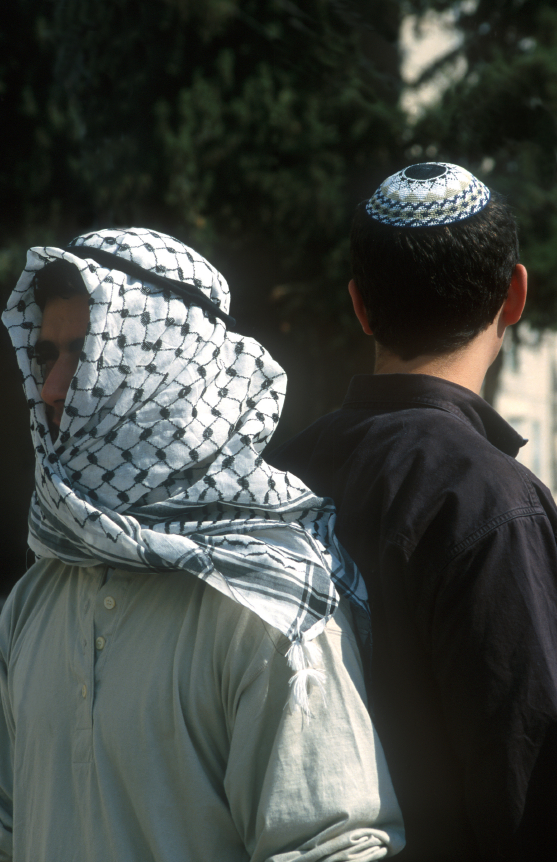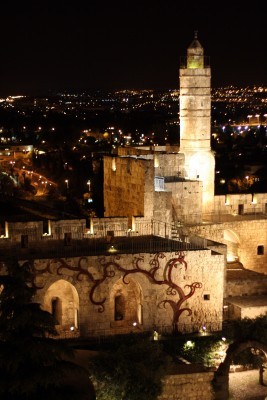Discovering the truth about shariah should frighten all non-Muslims.
IT’S WORTH CONSIDERING
This is the 11th in a series of articles on Shariah. These articles are based in the book, “Shariah-The Threat to America (An Exercise in Competitive Analysis-A Report of Team B II). Click here for the first article.
WHAT IS ‘SHARIAH’?
The Arabic word “shariah,” according to one modern English-language student textbook on Islam, “literally means a straight path (Quran 45:18) or an endless supply of water. It is the term used to describe the rules of the lifestyle (Deen) ordained for us by Allah. In more practical terms, shariah includes all the do’s and don’ts of Islam.” It is the supreme law that must comprehensively govern all aspects of Muslims’ lives, irrespective of when or where they live. Shariah is characterized as a “complete way of life” (social, cultural, military, religious, and political), governed from cradle to grave by Islamic law.
The Sources of Shariah
There are four sources for shariah that make it authoritative: the Quran, the Sunna, ijma, and qiyas. Deemed the “un-created word of Allah,” the Quran reflects direct divine revelation and is understood to be the primary source of Islamic law.
The Sunna is considered to be indirect divine revelation arising out of the hadiths, or sayings or acts of Mohammed. Ijma refers to the consensus of the grand mujtahids of the past. Finally, the fourth source for shariah is qiyas, or reasoning by analogy, which applies an accepted principle or assumption to arrive at a legal ruling.
Today I am going to focus on the Quran since it has the greatest influence. According to Muslim belief, it has existed since the beginning of time and was revealed by the Archangel Gabriel in the 7th Century to the Prophet Mohammed in the Arabic language of his homeland. Its points are considered timeless, and thus, it is mandatory that the Quran be deemed as eternal and eternally applicable to everyone, not just Muslims.
The Quran is comprised of 114 chapters (or Suras) that include some 6,236 ayat or verses, and is believed by Muslims to have been revealed over a period of 22 years (from 610 to 632, the year of Mohammed’s death). Chronologically speaking, the first 86 of the 114 chapters were said to have been revealed to the Prophet in Mecca while the remaining 28 came after the hijra to Medina in 622.
Although the chronological order of these verses is known, the Quran itself is not laid out in order of reported revelation but by length of verses (longest to shortest). In the beginning, Quranic verses were memorized and recited orally, with some being jotted down in a haphazard manner on pieces of parchment, plant leaves, and even stones. It was not until about 650 that the third Caliph, Uthman, commissioned an official, standardized version of the Quran, after which a concerted effort was made to find and destroy any earlier remnants and versions.
It is important to appreciate that the Quran was not compiled in the chronological order of revelations, but rather organized from longest to shortest verses. This decision makes for difficult reading and even more difficult understanding of what was said and when.
In light of the Islamic doctrine of “abrogation” – which holds that the later verses supersede, or abrogate, the earlier ones – the actual chronological order of the Quranic verses makes a critical difference. This is because there are contradictions among the verses, a delicate situation that had to be dealt with by Mohammed himself.
Thus arose the device known as al-mansukh wa al-nasikh (that which is abrogated and that which abrogates). The basis for this solution to an otherwise difficult conundrum in what is supposed to be a perfect book can be found in both the hadiths and the Quran itself, where verse 2:106 states: “When we cancel a message, or throw it into oblivion, we replace it with one better or one similar. Do you not know that God has power over all things?” A number of other verses convey the same understanding.
An Islamic jurist does not read Islamic law and decide for himself what is or is not abrogated as this has already been determined by the school of law to which the jurist belongs. These issues have already been decided. A Hanafi, Shafite, Maliki, and even Hanbali Islamic scholar will refer to their respective school’s books on abrogating and abrogated texts. No one can become a shariah judge unless he knows these passages by heart; they are that important.
In practice, Quranic abrogation results in a known doctrinal footprint that subordinates the milder, more moderate verses of the Quran from the Meccan period of revelation, to the later and violent verses of the Medina period. Islamic law is substantially derived from the Medinan period. Where a conflict exists, anything said during the Medinan period overrules anything on the same subject in the Meccan. And anything said in the later part of the Medinan period either overrules or controls anything said in the earlier part.
To put a fine point on it: When our shariah-compliant enemies cite from the most violent verses of the Quran to justify their actions, they are completely aligned with Islamic law and doctrine.
As the noted scholar David Bukay wrote in a 2007 essay for the Middle East Quarterly, “Statements that there is no compulsion in religion and that jihad is primarily about internal struggle and not about holy war may receive applause in university lecture halls and diplomatic board rooms, but they misunderstand the importance of abrogation in Islamic theology.” The point also should be made here that, independent of abrogation, the forcible imposition of shariah is intended to set the pre-conditions within a society that will “open minds and hearts to Islam, and thereby encourage conversion.”
Closely related to the doctrine of abrogation is the concept of progressive revelation, which means that the Quran’s verses were revealed gradually over a lengthy period of some 20 years. As Sayyid Qutb, the Muslim Brotherhood strategist put it: “The Quran did not come down all at once; rather it came down according to the needs of the Islamic society in facing new problems….”
According to Muslim belief, the gradual revelation of the Quranic verses tracked with the development of the early Muslim community itself under the Prophet Mohammed’s leadership. Early on, when his followers were a small, reviled group in Mecca, the corresponding revelations from Allah commanded a protective low profile. Even in the face of harsh criticism, Mohammed instructed his followers to maintain a peaceful attitude and the Quranic verses of the period reflect that attitude.
Later on, after Mohammed’s move to Medina (the hijra), circumstances for the early Muslims improved and their numbers, and strength, grew significantly. At this time, new revelations permitted them to fight back against those who attacked them. This is precisely the point made by Major Nidal Malik Hasan in his pre-Ft. Hood massacre presentation at Walter Reed. Hasan explained the “Jihad-rule of Abrogation” in Slide 35 of his presentation.
Finally, after the signal Battle of Badr in 624, where a relatively small Muslim force overcame a much larger enemy force of non-Muslims for the first time, revelations emerged that permitted – and then commanded – Muslims to go on the offensive from that time onward, until all the world should be under shariah. Specifically, the chronologically last Sura to address jihad is Sura 9, the “Sura of the Sword.” In accordance with the doctrine of abrogation, its passages represent the ultimate authority on the requirements of jihad:
Fight and slay the unbelievers wherever ye find them, and lie in wait for them in every stratagem of war. But if they repent, and establish regular prayers and practice regular charity, then open the way for them; for Allah is Oft-forgiving, Most Merciful. (Q 9:5)
Fight those who believe not in Allah nor the Last Day, nor hold that forbidden which hath been forbidden by Allah and His Apostle, nor acknowledge the religion of truth, even if they are of the 40 people of the Book, until they pay the jizya with willing submission, and feel themselves subdued. (Q 9:29)
Instructions on Muslim relations with Christians and Jews were laid out in the late Medinan period as well. Those familiar with Islamic concerns with regard to terrorism are familiar with the Quranic injunction: “Let there be no compulsion in religion.”(Q 5:99) This passage is a particular favorite of those Muslim Brotherhood operatives and others seeking to obscure the true character of shariah.
What most non-Muslims have not heard is Quran 3:85: “Whoever seeks a religion other than Islam will never have it accepted of him, and he will be of those who have truly failed in the hereafter.” Even more graphic is Sura 98:6 where it is asserted that non-Muslims are “the most vile of created beings.”
These verses are interpreted under shariah to mean that anyone who does not accept Islam is unacceptable in the eyes of Allah and that he will send them to Hell. When it is said that shariah is a supremacist program, this is one of the bases for it.
And even more specifically, regarding the possibility of Muslim friendship with any but fellow Muslims: “Oh ye who believe! Take not the Jews and the Christians for your friends and protectors; they are but friends and protectors to each other. And he amongst you that turns to them for friendship is of them. Verily Allah guideth not the unjust.”(Quran 5:51)
This verse lays down the rule for Muslims about whom shall be regarded as “the unjust,” besides the Christians and Jews: Muslims who take Christians and Jews as friends.
And lastly, to quote just one of the Quranic verses that is used repeatedly by shariah-adherent Muslims to castigate Jews and Christians, and by extension, the West:
“Shall I point out to you something much worse than this, (as judged) by the treatment it received from Allah? Those who incurred the curse of Allah and His wrath, those of whom some He transformed into apes and swine, those who worshipped evil….” (Quran 5:60)
So, according to Sura 5:60, Allah turned people who worshipped evil into apes and swine. The references refer, respectively, to the apes, who are the Jews (the people of the Sabbath), while the swine are Christians, the infidels who adhere to the communion of Jesus.
Apologists for shariah try to dismiss such citations as “cherry picking” from the Quran. Regrettably, these Sura are selected precisely because they are operative according to shariah’s doctrine of abrogation. This stepped process of development through which the first Muslims moved forms the model for all Muslims to the current day.
Muslim children, and those studying to become converts to Islam, are typically taught first about the gentle “your religion for you, mine for me” verses of the Quran.
Instruction to Westerners, as it turns out, is strictly limited to understanding Islam in its early peaceful phases. In fact, it is a top priority of the Islamic Movement to discourage U.S. leaders from studying Islamic doctrine and law. As Edward Said famously argued in his 1978 book Orientalism, only those who can speak classical Arabic can understand the true meaning of Islam, so why read anything at all?
Muslims, however, are required to proceed on to eventual understanding of the complete sequence contained in the Quran and hadiths. It is the management of the Muslim Community through this graduated progression that the Muslim Brotherhood’s Sayyid Qutb made the object of his seminal jihadist monograph “Milestones” – and why it is impossible to understand the full import of Islam without mastering the doctrines of abrogation and its associated “progressive revelation.”
Finally, it should be noted that the process of progressing along the “milestones” maps to what the national security community refers to as the “self-radicalization process.” Finally, progressive revelation tracks with the stepped-learning process that many national security and law enforcement officials have taken to calling “the self-radicalization process.” They seem unaware of the fact that shariah itself calls for this evolution. Its practice may or may not be properly described as “radical,” but it certainly reflects the gradual revelation of Islam itself.
Check out my YouTube channel.
ON THE LIGHTER SIDE
ATTRIBUTIONS
Inclusion of photographs and/or images in no way implies the endorsement of this blog or its information by the photographer or designer.










Leave A Comment